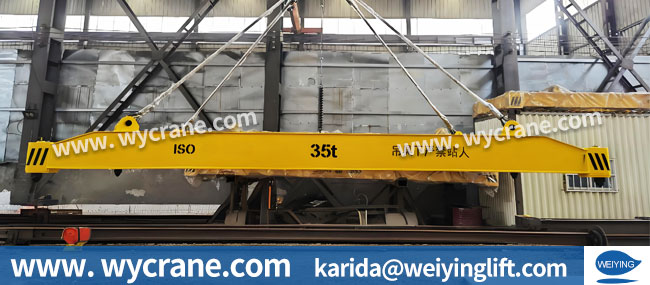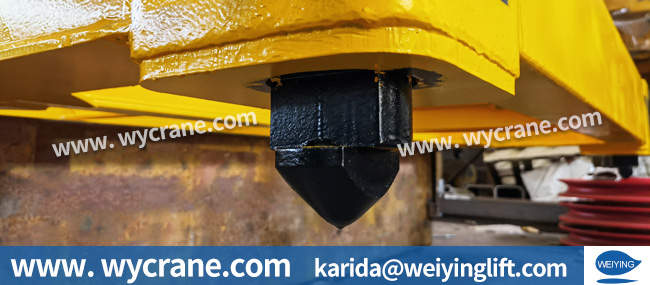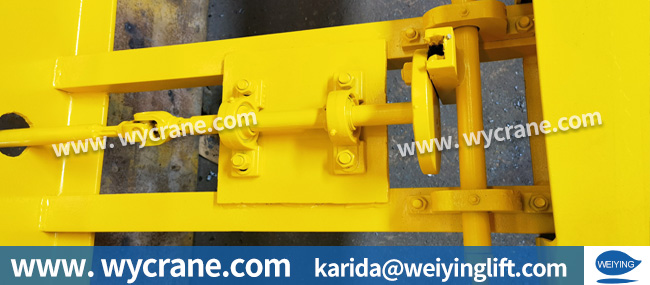In port logistics, the efficient loading and unloading of containers is the key to the rapid flow of goods. The rational use of port-specific fixed container spreaders is directly related to operational efficiency and costs. This article will focus on the loading and unloading solutions for 20ft and 40ft containers, helping ports to optimize their operation processes.
The commonly used fixed container spreaders in ports include the direct lifting type and the combined type. The direct lifting type has a simple structure and is used in conjunction with a crane for lifting containers through mechanical connections. The combined type is more flexible, as it can adjust some of its structures according to the size of the container, and it has significant advantages in the mixed loading and unloading operations of 20ft and 40ft containers.
During operation, the crane lowers the hook so that the container spreader precisely docks with the corner fittings at the top of the container. The corner fittings are the key connection parts in the standardized design of containers. The container spreader inserts the locking devices such as twistlocks into the locking holes of the corner fittings and rotates to lock them. Then, the crane lifts the hook to complete the lifting operation. When placing the container, the operation is reversed to unlock it.

A 20ft container is approximately 6.1 meters long. The span of the container spreader needs to be precisely matched. The distance between the locking devices is generally set at 2,259 millimeters. The lifting height should meet the requirements of port operations, and usually, the container needs to be lifted to a height 15-20 meters above the coaming of the ship’s hatch.
When lifting, the crane operator uses the monitoring system in the cab to lower the container spreader slowly and smoothly to ensure that the locking devices are accurately inserted into the locking holes of the corner fittings. Before lifting, a trial lift should be carried out first to check the firmness of the connection. After confirming there are no abnormalities, lift it at a uniform speed. When placing the container, lower it slowly to avoid collisions.

A 40ft container is approximately 12.2 meters long. For the combined type of container spreader, the middle connection structure needs to be adjusted, and the span between the locking devices should be increased to 5,867 millimeters. Some advanced container spreaders can automatically adjust the span with one click in the operation room. Since the full load weight of a 40ft container can reach about 30 tons, high-strength steel should be used to manufacture the key stressed components of the container spreader.
When lifting a 40ft container, due to its long length, it is more affected by wind resistance, and there are high requirements for the operational stability of the crane. The operator should pay attention to the wind speed and wind direction. When the wind speed exceeds 15 meters per second, the operation should be carried out with caution or suspended. When loading and unloading ships, use the ship’s stowage plan and the port operation command system to control the lifting rhythm.

Conduct a comprehensive inspection of the container spreader regularly. Pay attention to the wear of the locking devices, and replace the components whose wear exceeds the standard in a timely manner. Conduct flaw detection on the steel structure and lubricate the lubrication points properly to extend the service life of the container spreader.
If the locking devices cannot be locked or unlocked normally, first check the control circuit, and then disassemble the locking devices to check the internal structure. If there is abnormal shaking during the lifting of the container spreader, check the crane’s hoisting mechanism and the suspension device of the container spreader, and repair them in a timely manner.Optimizing the container spreader adaptation solutions, standardizing the operation procedures, and strengthening daily maintenance provide a solid guarantee for the efficient operation of global trade.
If you have any needs regarding container spreaders, please feel free to contact us. With our rich production experience, we are confident that we can provide you with a satisfactory response!
We have 34 years of manufacturing experience and 12 years of export experience,business covers over 100 countries and regions worldwide, including Asia, Europe, America, Africa, and Oceania, forming a global product sales network.Received ISO system certification and CE product certification!
Our main products include 6 series of nearly 100 varieties, including electric hoists, electric winches, gantry cranes, bridge cranes, marine cranes, and gantry cranes.
E-mail: karida@weiyinglift.com
Website: www.wycrane.com